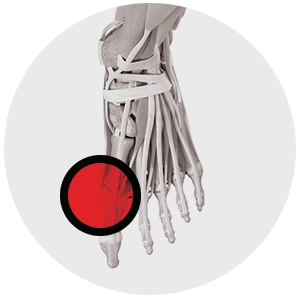Bunion Surgery

Hallux Valgus Bunion Surgery
Bunions are a common deformity in the community. They occur due to a muscle imbalance that is often inherited. Inappropriate footwear may exacerbate the condition but it is not usually the underlying cause. Bunions tend to worsen with age and can eventually cause pain and deformity. The bunion may also result in damage to other parts of your foot. Pain is felt because of the bunion size and abnormal biomechanics. The time to have treatment is when they cause you significant pain or you have difficulty finding appropriate footwear.
Operative Management
Dr Rao uses a variety of techniques depending up on the size of your deformity, the chief mode of bunion correction is the Scarf and Akin osteotomy. The fixation for this procedure may involve screws or even a plate, and a specially designed staple. The Scarf Akin osteotomy is an excellent procedure with lower recurrence rates, less stiffness and less issues with transferring problems to other parts of your foot. The key to its success is that it restores the foot mechanics and allows early return of joint motion and has a lower recurrence rate.
The procedure is performed through an incision on the side of your foot, tight ligaments and tight muscles are released. The bunion is then removed with the use of a saw. The 1st metatarsal bone is then cut and adjusted in order to narrow the foot. Fixation is then used by way of screws or a plate. After this is performed, a wedge of bone is removed from the phalanx of the great toe, that thereby allows the toe to be straightened and this is fixed with a small staple. The capsule overlying the joint is then tightened and the skin enclosed. The metalwork does not usually need to be removed.
Post-operative Management
For the first 2 weeks you will either be non-weight bearing or weight bearing on your heel in a post-operative shoe. The bandaging for the foot assists in maintaining the position of the great toe. At the 2 week post-op mark sutures are removed and an appointment is made with your podiatrist to obtain some “spacers” which can then go between the 1st and 2nd toes. Swelling occurs over the first 6-8 weeks and then starts to reduce. The recovery time is around 3 months after surgery, however the foot will continue to improve over 12 months.
Foot surgery without appropriate pain relief is very uncomfortable. Whilst the operation is being done under an anaesthetic a nerve block is usually performed which allows for immediate post-operative pain relief within the first 24 hours. You should wake from surgery with minimal pain and hopefully have pain managed with oral analgesics.
Risks and Complications
No surgery is risk free and the risks and complications will be discussed with you prior to surgery in a language easily understood. The main risks are of infection, blood clots and anaesthetic problems. With bunion surgery there is a 5% chance of recurrence of the deformity or over-correction of the toe or problems with the fixation. The successful outcome is achieved by more than 90% of patients and Dr Rao’s aim by 6 months is a 90%-95% chance that you are happy to have undergone the surgery and feel better.
Recovery Times
In terms of hospital stay:
- 1-2 nights in hospital;
- Rest and elevation for 10 days to 2 weeks;
- Crutches and frame for 1-2 weeks;
- Time off work:
- for seated jobs, 4 weeks
- for standing jobs around 8 weeks
- lifting and carrying jobs 12 weeks
- Foot swelling for 12 weeks.
In terms of shoe wear:
- Hospital type shoe in first 6 weeks;
- A wider shoe between weeks 6-12;
- Normal shoe at about 12 weeks
- Fashionable shoes can take up to 6 months before they are wearable.
Meet Dr Rao
Dr Rao is a Newcastle Orthopaedic surgeon who specialises in all aspects of foot and ankle surgery. He graduated from medicine at the University of Sydney and trained as an orthopaedic surgeon in Newcastle and also in Queensland.
He also undertook further training by way of fellowship with world famous Dr Terry Saxby in Brisbane in 2008. He has also conducted further training by attending numerous courses overseas, in Thailand, the USA and right across Australia.

